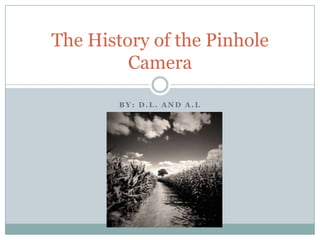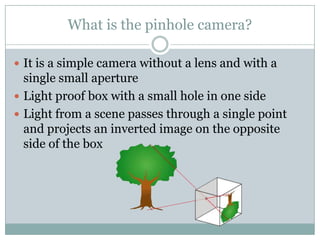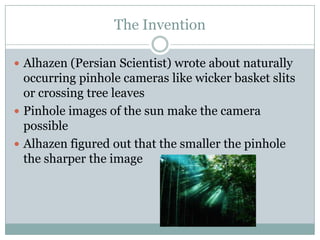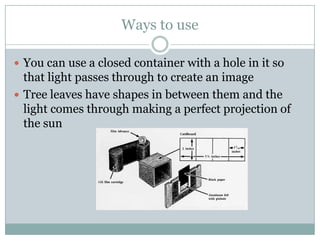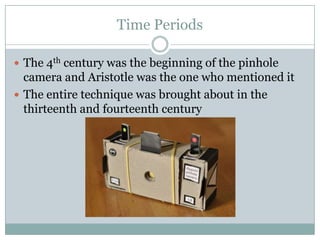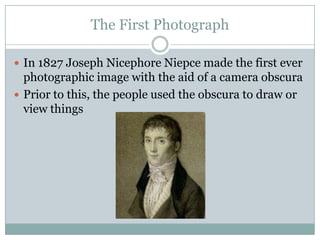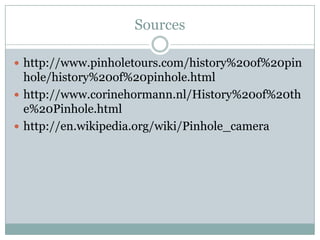The history of the pinhole camera
- 1. The History of the Pinhole Camera BY: D.L. AND A.L
- 2. What is the pinhole camera? ï It is a simple camera without a lens and with a single small aperture ï Light proof box with a small hole in one side ï Light from a scene passes through a single point and projects an inverted image on the opposite side of the box
- 3. The Invention ï Alhazen (Persian Scientist) wrote about naturally occurring pinhole cameras like wicker basket slits or crossing tree leaves ï Pinhole images of the sun make the camera possible ï Alhazen figured out that the smaller the pinhole the sharper the image
- 4. Ways to use ï You can use a closed container with a hole in it so that light passes through to create an image ï Tree leaves have shapes in between them and the light comes through making a perfect projection of the sun
- 5. Time Periods ï The 4th century was the beginning of the pinhole camera and Aristotle was the one who mentioned it ï The entire technique was brought about in the thirteenth and fourteenth century
- 6. The First Photograph ï In 1827 Joseph Nicephore Niepce made the first ever photographic image with the aid of a camera obscura ï Prior to this, the people used the obscura to draw or view things
- 7. Sources ï http://www.pinholetours.com/history%20of%20pin hole/history%20of%20pinhole.html ï http://www.corinehormann.nl/History%20of%20th e%20Pinhole.html ï http://en.wikipedia.org/wiki/Pinhole_camera
